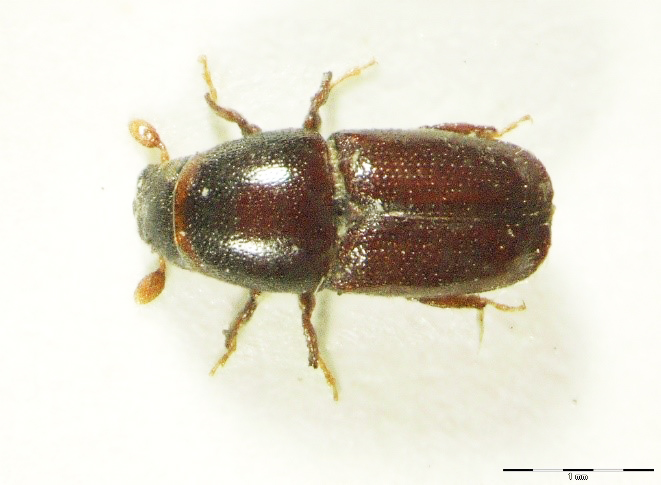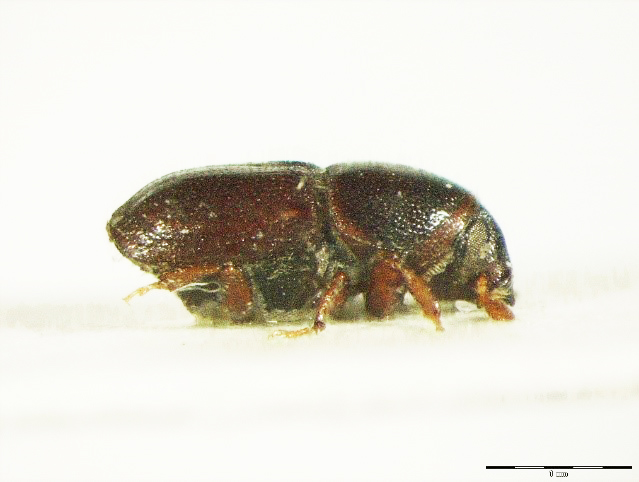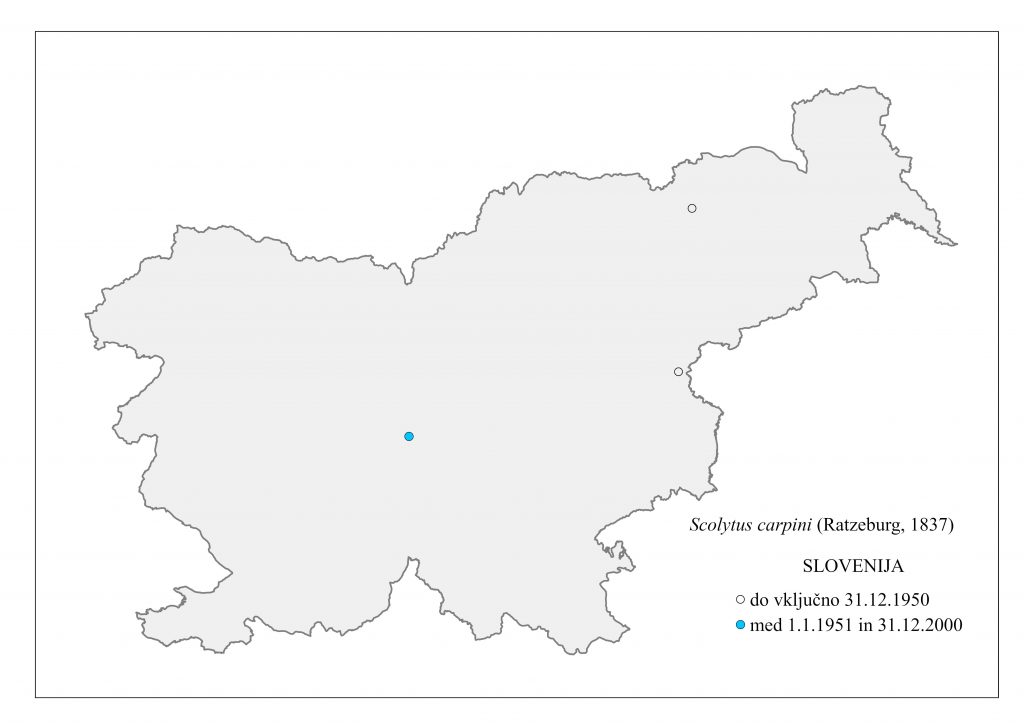32.01. Scolytus carpini (Ratzeburg, 1837)
Presence
E: AU BE BH BU CR CT CZ EN FR GE GR HU IT LA LU NL PL RO SK SL SP ST SV SZ UK YU »Caucasus«
A: TR
Figure 149: Scolytus carpini, dorsal, lateral (Photo: Maja Jurc)
Older catalogs and keys – citations of name
Grüne 1979: Scolytus carpini (Ratzeburg, 1837); Freude, Harde, Lohse 1981: Scolytus carpini Ratzeburg; Pfeffer & Knížek 1993: S. carpini (Ratzeburg, 1837); Pfeffer 1995: S. carpini (Ratzeburg, 1837).
Figure 150: Scolytus carpini, distribution map according to historical and recent data
Ecology and presence in Slovenia
The species is found in central, southern and south-eastern Europe, the Caucasus, the Crimea, southern Sweden and Turkey. Only two sites are known in Slovenia, in Dolenjska and Štajerska, with no recorded hosts. The species is rare here (Figure 150). According to the literature, the hosts are Carpinus betulus, C. orientalis, Ostrya carpinifolia, Fagus sylvatica, F. orientalis, Quercus petraea, Q. pubescens, Q. robur and Corylus avellana. Floemophagous monogamous species, swarming in June. Short, 3-4 cm long, uniramous transverse tunnels in the bark, touching the sapwood. The larval tunnels are up to 10 cm long. Adults are 2.0-3.6 mm long and blackish brown in colour. The elytra run almost horizontally to the end of the abdomen, where they are roundly truncated. The first two segments of the abdomen (sternites) are horizontal, the others rise obliquely to the anal segment. In males the forehead is flat and covered in long yellowish hairs. In females the forehead is convex and sparsely covered in short hairs (Figure 149).



